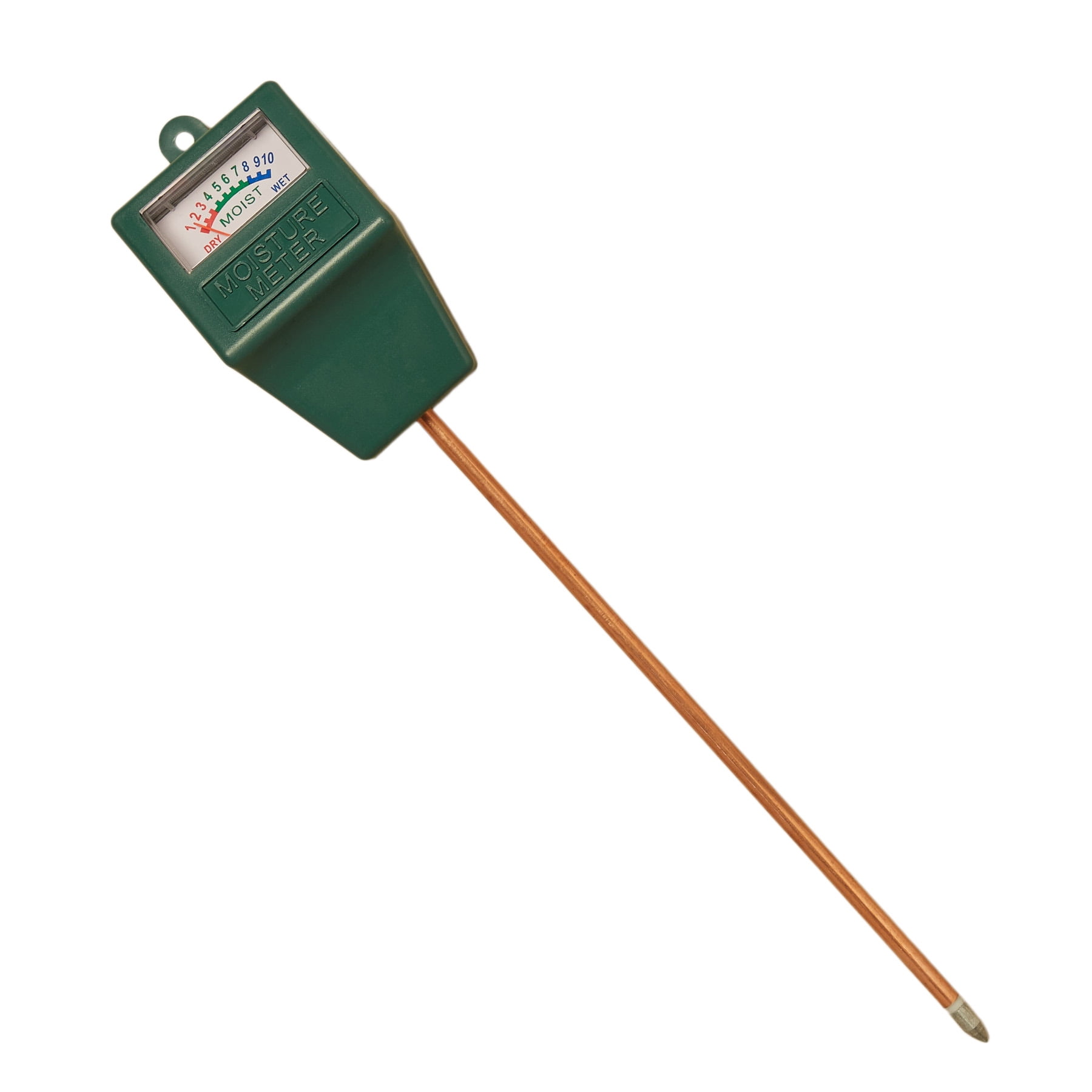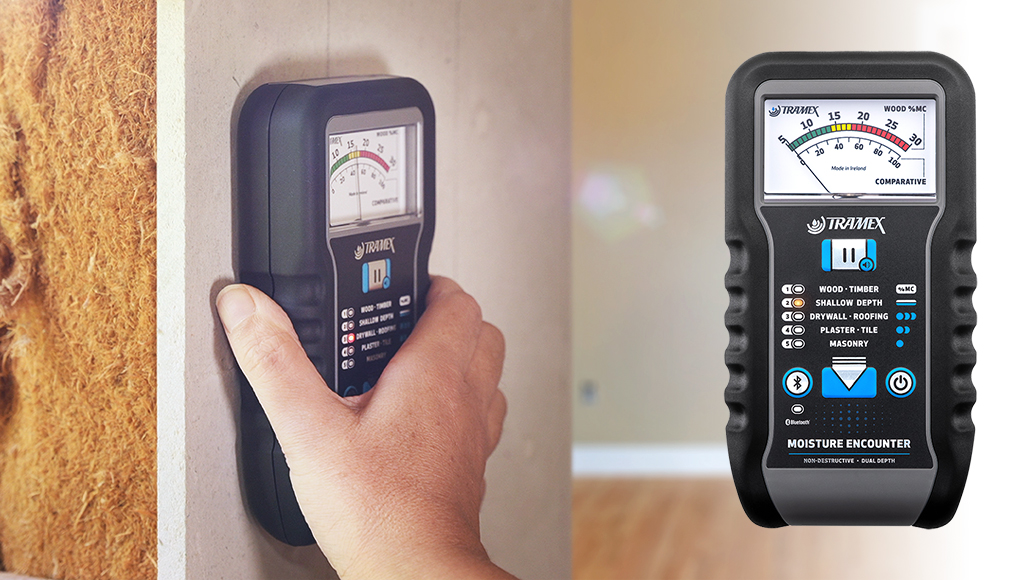Exactly How a Moisture Meter Can Aid You Preserve Optimum Conditions in Your Home or Workplace
Exactly How a Moisture Meter Can Aid You Preserve Optimum Conditions in Your Home or Workplace
Blog Article
Delve Into the Globe of Dampness Meters: Whatever You Need to Know
In the realm of dampness meters lies a world of accuracy and usefulness that usually goes undetected. These devices, while apparently simple, hold a wealth of information that can substantially affect various industries and applications. Understanding exactly how moisture meters operate, the different kinds readily available, and their varied uses can clarify their importance in ensuring top quality and efficiency. By exploring the intricacies of wetness meters, one can discover an important device that transcends simple dimension, supplying insights that can make a significant distinction in many fields.
Exactly How Moisture Meters Work
Dampness meters operate by measuring the electric conductivity or capacitance of materials to identify the moisture content existing - Moisture Meter. These meters are very useful tools throughout numerous sectors, including construction, farming, and woodworking. By utilizing various methods such as pinless or pin-type innovation, wetness meters supply accurate analyses that assist experts make informed decisions
Pin-type wetness meters work by inserting the sharp pins right into the product being examined. The electrical conductivity between the pins is after that determined, with higher wetness levels causing increased conductivity. On the various other hand, pinless dampness meters use electromagnetic signals to check a bigger location without triggering any kind of damages to the product's surface area. These meters are ideal for promptly evaluating moisture levels in big locations or finished items.
Despite the method utilized, moisture meters play an essential duty in protecting against issues such as mold and mildew growth, architectural damages, or product flaws brought on by excess wetness. Understanding just how these meters job is necessary for ensuring the top quality and honesty of materials in numerous applications.
Kinds Of Moisture Meters
Given the vital duty moisture meters play in various sectors, it is necessary to comprehend the different kinds readily available to experts for accurately assessing moisture levels. There are largely 2 major kinds of moisture meters: pin-type and pinless dampness meters.
Pin-type wetness meters use 2 pins that are inserted into the product being checked to gauge the electrical resistance between them. This technique is typically used for wood, drywall, and various other building materials. Pin-type meters offer accurate readings at specific depths, making them suitable for determining wetness slopes.
On the other hand, pinless wetness meters utilize electro-magnetic sensor plates to scan a larger location of the material without causing any damages. This type appropriates for promptly scanning huge locations and is frequently made use of for flooring, wall surfaces, and ceilings. Pinless meters are convenient for taking analyses on completed surface areas without leaving any visible marks.
Both kinds of moisture meters have their benefits and are picked based on the specific needs of the work available. Recognizing the differences between these kinds is essential for professionals to make precise moisture evaluations.
Applications Across Industries
Construction specialists rely on moisture meters to assess the dampness degrees in structure products like drywall, timber, and concrete, which is critical for maintaining structural integrity and preventing concerns like rot or mold and mildew. The flooring market utilizes wetness meters to determine the moisture web content in subfloors before mounting different flooring coverings, preventing expensive damages due to excess wetness. In the food market, moisture meters are used to check and manage moisture levels in pop over to these guys items such as grains, nuts, and dried fruits to preserve quality and quality.
Tips for Utilizing Moisture Meters
When gauging the dampness material in numerous products,Utilize the moisture meter's calibration setups to guarantee exact readings. Calibration is critical for the correct performance of a wetness meter. Prior to each usage, it is advisable to inspect and adjust the calibration setups according to the specific product being tested. In addition, see to it the meter is readied to the right wetness array for the product you are determining to obtain one of the most specific outcomes.

When making use of a pin-type wetness other meter, place the pins to the appropriate deepness recommended for the material being tested. This makes sure that the dampness analyses are drawn from the correct depth within the material, offering an extra exact depiction of its wetness web content. For pinless dampness meters, keep in mind to preserve correct contact with the material's surface to obtain dependable readings.

On a regular basis check and replace the batteries in your wetness meter to stop inaccurate readings due to reduced power. When not in usage to extend its lifespan and maintain its precision, Store the meter in a secure and dry location. By complying with these tips, you can optimize the efficiency of your wetness meter and get specific wetness material measurements throughout various products.

Upkeep and Calibration
To ensure the accuracy of moisture material measurements, routine upkeep and calibration of the wetness meter are essential actions in its appropriate functioning. Maintenance involves keeping the wetness meter tidy and cost-free from debris that could affect its analyses. It is very important to follow the manufacturer's standards for cleaning up to avoid damages to the tool. Furthermore, regular calibration is necessary to verify the precision of the analyses. Calibration adjusts the wetness meter to ensure that it provides trustworthy and regular outcomes.
Calibration must be performed occasionally, particularly if the moisture meter is utilized frequently or in important applications where exact measurements are called for. Lots of dampness meters feature calibration tools or can be adjusted by expert solutions - Moisture Meter. It is suggested to maintain a log of calibration dates and results to track the performance of the wetness meter over time. By maintaining why not try this out and calibrating the dampness meter regularly, individuals can trust the accuracy of the wetness content dimensions gotten.
Verdict
Finally, moisture meters play a crucial duty in numerous markets by properly measuring the moisture web content of products. Comprehending just how these gadgets function, the various types readily available, and appropriate maintenance and calibration are necessary for acquiring trustworthy results. Whether in manufacturing, building, or agriculture, making use of moisture meters aids make certain quality assurance and efficiency in processes.
Construction experts rely on dampness meters to examine the wetness levels in building materials like drywall, concrete, and wood, which is critical for keeping architectural integrity and avoiding issues like rot or mold and mildew. The flooring industry uses dampness meters to gauge the dampness web content in subfloors before setting up various flooring treatments, protecting against costly problems due to excess dampness.Use the dampness meter's calibration setups to guarantee exact analyses when measuring the dampness content in various materials. By complying with these tips, you can maximize the performance of your moisture meter and obtain accurate dampness material dimensions throughout different materials.
In conclusion, moisture meters play a crucial role in numerous markets by precisely gauging the moisture content of materials.
Report this page